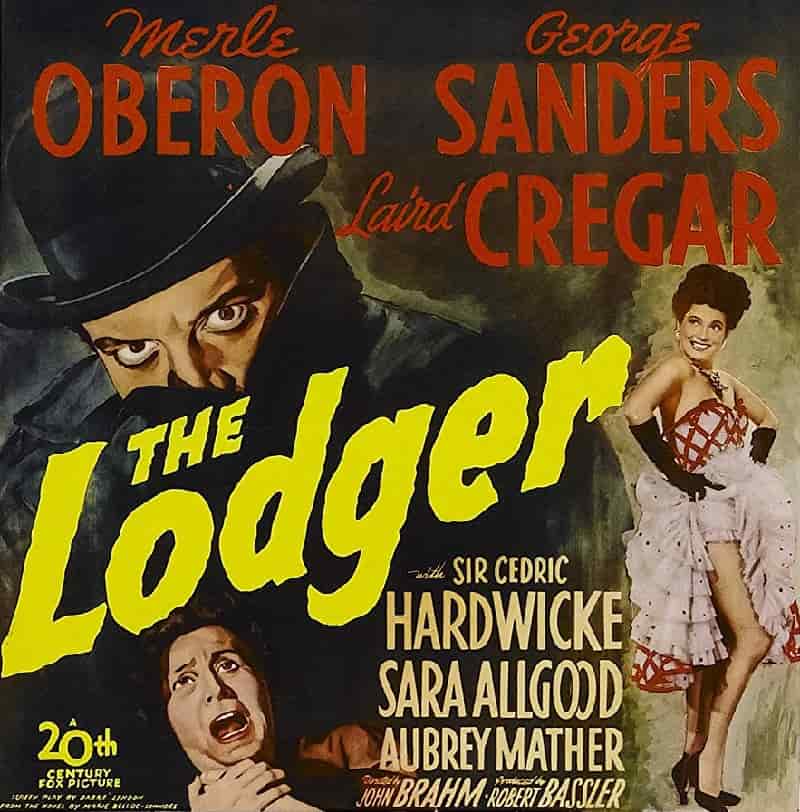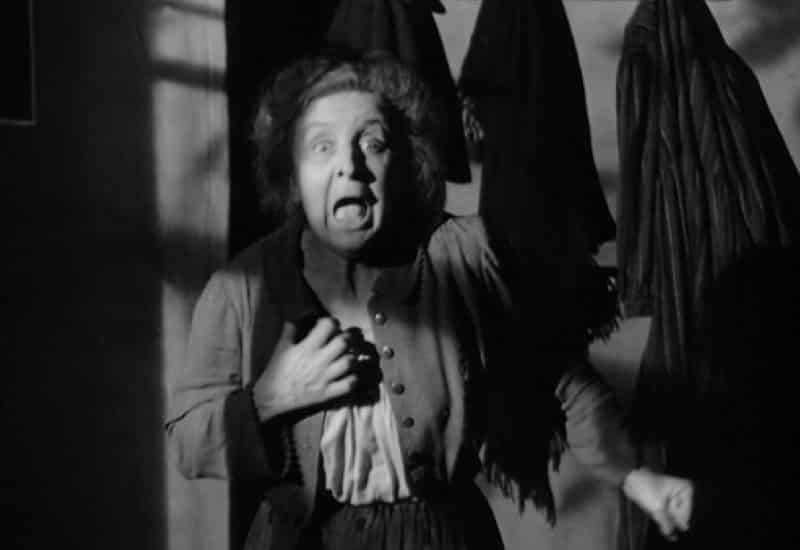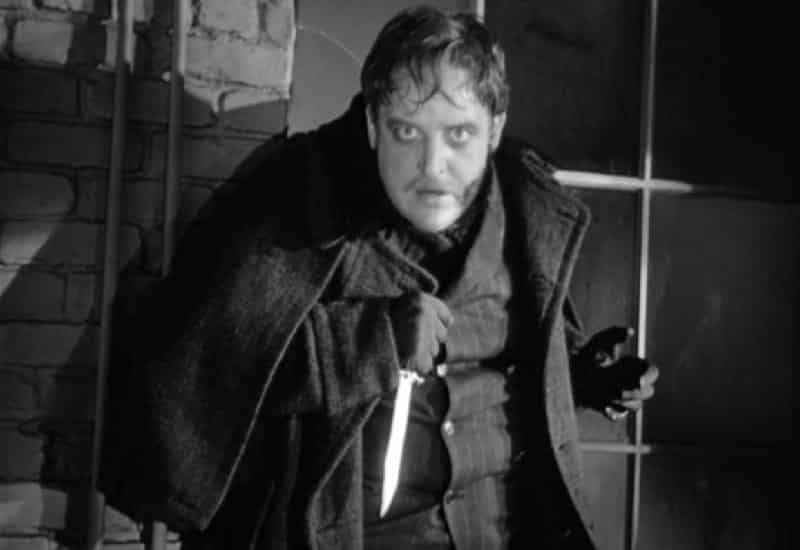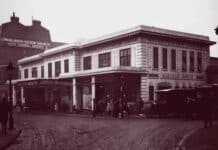RICHARD PHILLIPS-JONES looks at the third screen adaptation of the Jack the Ripper-inspired novel, The Lodger 1944.

TITLE: The Lodger
RELEASED: 19th January 1944
STARRING: Laird Cregar (Mr. Slade), Merle Oberon (Kitty Langley), George Sanders (Inspector Warwick), Cedric Hardwicke (Robert Bonting), Sara Allgood (Ellen Bonting)
WRITER: Barré Lyndon (from the novel by Marie Belloc Lowndes)
DIRECTOR: John Brahm
London in the late 19th-century. A lady of the night is making her way back home when she becomes the latest victim of Jack the Ripper.
As the police race to the scene, a mysterious man arrives at a house advertising rooms to let. He introduces himself as Mr. Slade, a pathologist at the local hospital.
Once Slade has taken up residence, lady-of-the-house Mrs. Bonting becomes suspicious of Slade’s nocturnal habits. Her concerns aren’t helped by Slade’s apparent interest in daughter Kitty, a music hall performer…
So, Jack the Ripper is at large once again.
Although a massive success at the time, this particular version of The Lodger has perhaps been a little overshadowed by its predecessor in terms of its place in cinema history. Since that earlier 1927 film was such a key work in Alfred Hitchcock’s fledgling career, that shouldn’t be entirely surprising.

At this remove in time however, comparisons to the Hitchcock film seem pointless since the two are very different beasts, and John Brahm’s masterful film deserves to be regarded amongst the period’s best screen chillers in its own right.
A crucial difference here is that, unlike in the earlier adaptation (and indeed the original novel), the killer is explicitly referred to as the Ripper, and where Hitchcock used a contemporary setting, Barré Lyndon’s screenplay places the action in the late 1800’s. Also, there is little ambiguity for the audience is aware early on that Mr. Slade is the Ripper himself.
That this film perhaps isn’t celebrated as much as it should may be partly down to the studio that produced it. 20th Century-Fox certainly aren’t the first outfit you think of when discussing the golden age of Hollywood horror.
Their more common fare of the time was biographical pictures or lavish musicals. After dipping their toes into the horror genre with Dr. Renault’s Secret and The Undying Monster (both 1942), The Lodger was still a surprising choice for Fox, at odds with their usual image.
Fox’s musical tendencies were evidently a hard habit to break: Ms. Oberon is called upon to perform a couple of numbers in full, the second of which drives Mr. Slade over the edge and into the high-octane climax, but offsetting the glossy production are some very film-noir visual touches, a sequence set in Scotland Yard’s infamous Black Museum and the effective transformation of the familiar Fox backlot into a fog-drenched London.

Above all else, though this is very much Laird Cregar’s film: Up to this point a respected stage actor and reliable supporting player for Fox (his turn as the Devil himself in Heaven Can Wait (1943) being especially notable), The Lodger would put Cregar firmly in the limelight and his performance is nothing short of spellbinding.
When the film became a major success, Fox were eager for more. The same team would arguably surpass it with their next venture the following year, Hangover Square…
FOOTNOTE: This seems as good a place as any to celebrate the talents of director John Brahm and it’s a great pity that he didn’t get to make more horror chillers since, after a great run with The Undying Monster (1942), The Lodger (1944) and Hangover Square (1945), one would have though he would be 20th Century-Fox’s natural choice to direct Dragonwyck (1946), but his career at the studio seemed to fade somewhat after this mighty trio of films.
Aside from directing Vincent Price in The Mad Magician (1954), his later career was mostly in TV where, as the director of several key episodes of The Twilight Zone (1959-64), his German-expressionistic stylings had a major impact on the look and feel of the series.
Brahm would also direct memorable segments for Alfred Hitchcock Presents (1955-61) and the Boris Karloff-hosted Thriller (1960-62). His contributions to film and television’s darker corners should not be undervalued.
Tell us what you think of The Lodger 1944 in the comments section below!








Would be interesting to watch this version back to back with the 1927 Hitchcock version to see how they compare.